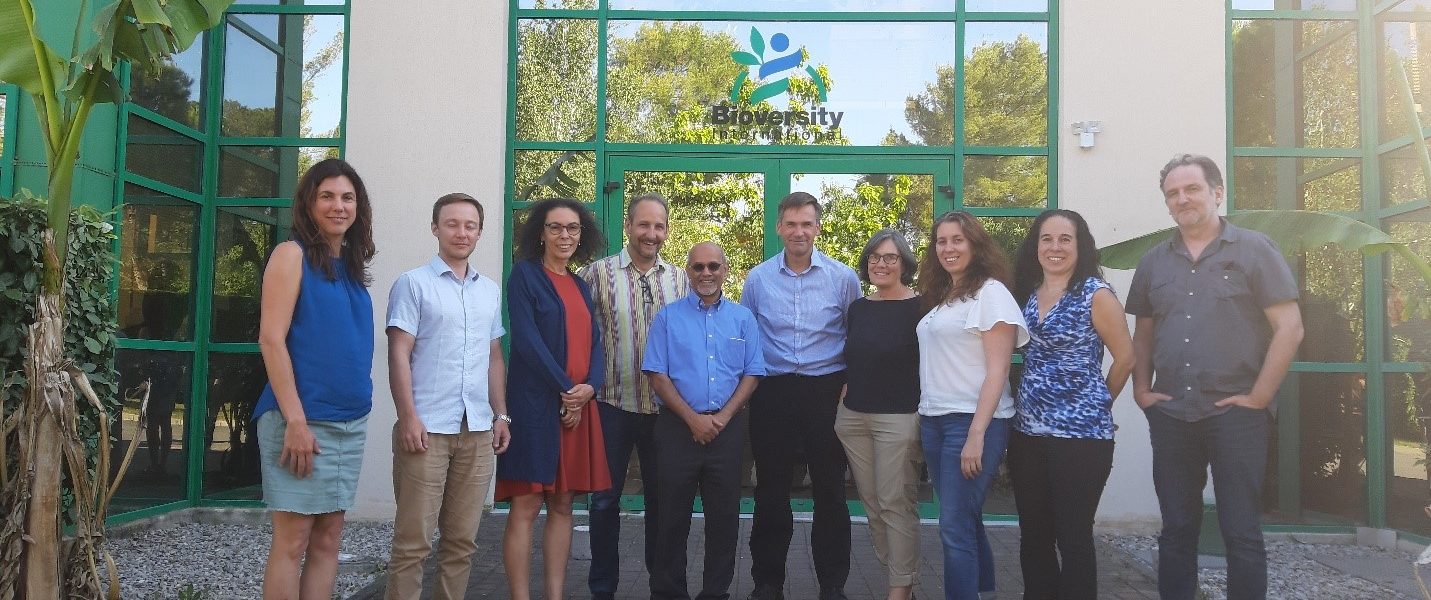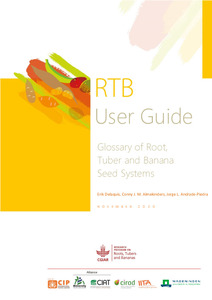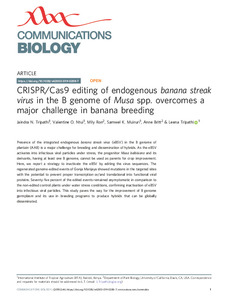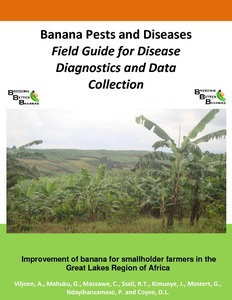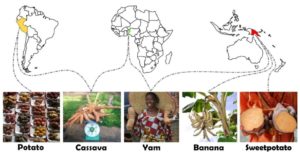
Project sites and crops included in the RTB on farm diversity! project.
Photo credits: Stef De Haan/CIP, Erik Delaquis/CIAT, Gabriel Sachter-Smith/consultant, Bioversity International
This June, scientists from all over the world convened in the south of France for a unique conference. Held every ten years or so since 1997, the Harlan Symposium showcases research on the origins of agriculture, crop domestication & evolution, and the diversity and utilization of genetic resources. Named after Jack Harlan, professor of plant genetics, a passionate advocate of agrobiodiversity, and early crop diversity collector, this year’s edition explored diverse topics ranging from the domestication of the Asian elephant to using citizen science to document banana diversity.
Attending the symposium was a group of CGIAR and CIRAD scientists who took the opportunity to launch a three-year initiative in the spirit of Harlan’s legacy: to document and understand the genetic diversity of RTB crops in three continents.
Building on several years of previous work in the CGIAR-RTB research program, the project ‘On farm: Exploring the genetic diversity of RTB hotspots’ (or ‘RTB on farm diversity!’ for short) takes on the challenge of evaluating and documenting genetic diversity in hotspots of some of the world’s most important staple crops.
Farming communities continue to shape and maintain the diversity of crops the world over. It is through the interaction of farmers and crops that functional diversity in each species is shaped and maintained in an ever-evolving process of adaptation, selection, breeding, and maintenance. In this way, farming communities are the stewards of crop-variety diversity.
However, the FAO 2019 state of the world’s biodiversity for food and agriculture report highlights alarming declines in biodiversity at both species and genetic levels – and increases in the threats responsible for this erosion. Though it is on farms where crop wild relatives continue to breed with landraces, introducing new genes into breeding pools, over 95% of such species are still inadequately represented in gene banks. In this perilous context, understanding on farm diversity management is more critical than ever to safeguard the future of our food supply.
Three sites were chosen for the RTB on farm diversity! project:
- Peru, where the Andean topography generates an array of microclimates from tropical forests to glacial peaks, accompanied by primary centers of diversity for staple crops including cassava in the steamy lowlands, and the bewildering diversity of potato on high altitude plateaus.
- Papua New Guinea, the planet’s most linguistically diverse country, with a stunning array of bananas to match. Here there is undocumented diversity of many globally important RTB crops – included for evaluation in this project are banana, yam, and sweetpotato.
- Benin, a long, club-shaped country in West Africa’s center of crop diversity, where the yam represents more than just food. Over 95% of the world’s yam production remains in Africa; particularly in the Western continent where the crop takes a paramount role in nutrition and markets, but also in ritual beliefs and social customs. Africa is also a secondary center of diversity for cassava, the result of centuries of crossing and selection by farmers following the crop’s introduction from South America.
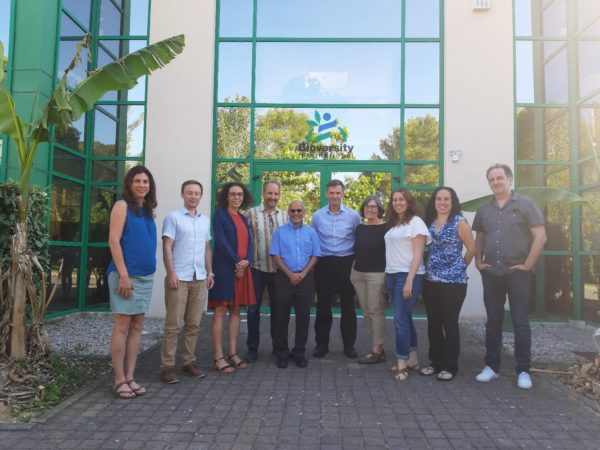
Representatives from Bioversity International, CIAT, CIP and CIRAD (IITA participated virtually) gathered in Montpellier to launch the project ‘On farm: Exploring the genetic diversity of RTB hotspots.
Despite their differences, these three sites are reservoirs of crop diversity, each facing the transformative pressures of a world undergoing rapid environmental and social change. The research in this project is vital, not only to understand how the human-crop relationship continues to shape both parties but also to identify gaps in existing ex-situ gene bank collections, bringing to the fore what we risk losing without concerted efforts to protect and manage crop diversity.
In this project, Bioversity International, CIAT, CIP, CIRAD, and IITA join a wide array of national partners; integral project members who make it possible to document the genetic resources in these hotspots. Together the group will share each other’s strengths, expertise, and methods, shedding new light on global RTB crop diversity.
